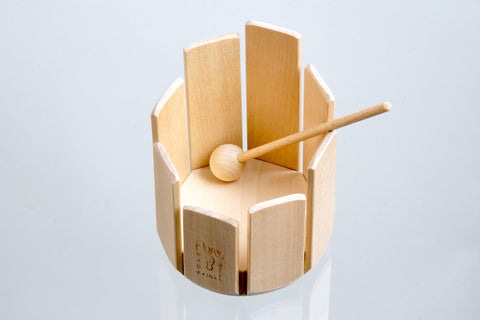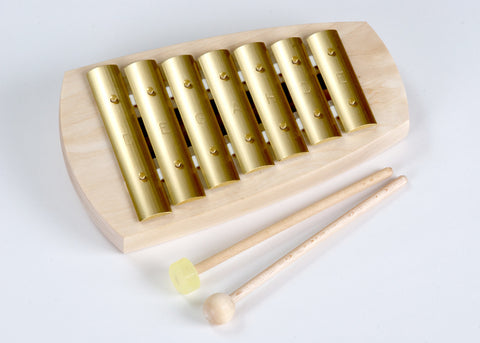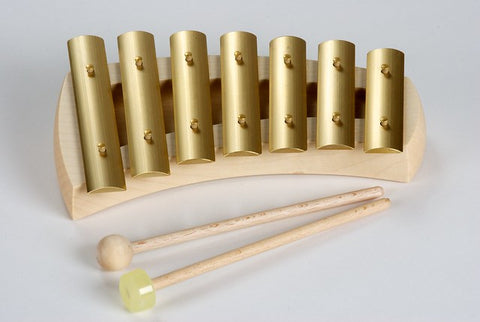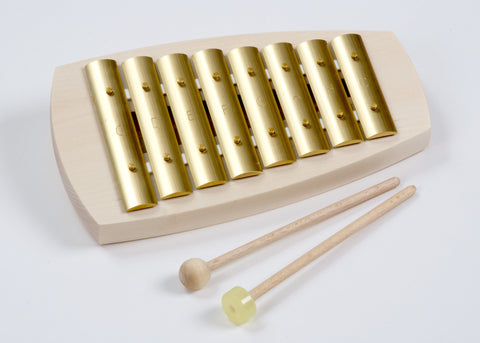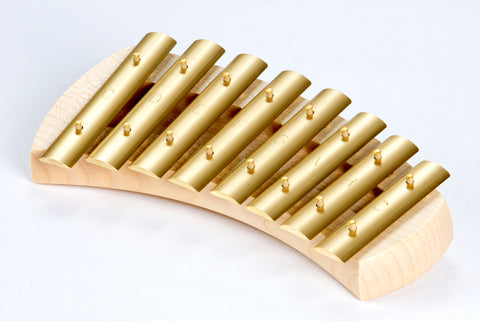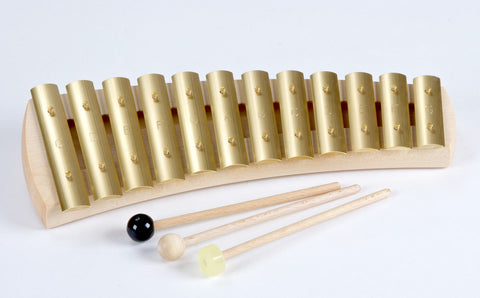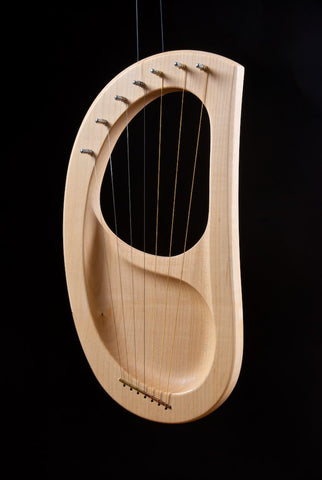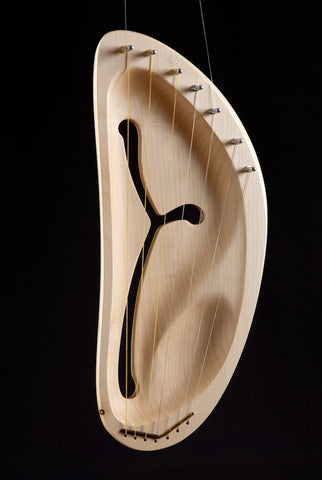This 12-string diatonic lyre is mainly used in schools. It takes the music to the next step from the pentatonic stage on. With this instrument you can play written art-music as well as all kinds of folk lore. You can use it at home by musical games and storytelling and much more.
This lyre can be tuned pentatonic as well as diatonic. In order to simplify orientation, this lyre has red and blue strings to make it easier to find the right string. Both the 7-stringed and the 12-stringed lyre can be tuned in open chords and be used as a drone instrument.
Due to the special shape of the body, the lyre allows the wood to reveal all its inherent sound qualities. This sound is especially rich of overtones and you experience a rainbow like range of sound colours.
Includes a tuning wrench and an instruction sheet that contains more tips and tricks regarding how to use your instrument.
12-string diatonic lyre (LDD): a-h-c’-d’-e’-f’-g’-a’-h’-c’’-d’’-e’’
Listen to the 12-string diatonic lyre (LDD) in this duo performed by Kjell Anderson (founder of Auris) and John Billing:
Material: Maple wood
Made in Sweden
The use of lyres in Steiner education
The strings of the lyre are stroked, rather than plucked, and its unique construction allows the resonance of each tone, once sounded, to be freely sustained into the surrounding space. This phenomenon creates an unparalleled opportunity to experience the quality of a pure tone.
In the 1960s, German music educator Julius Knierim created a 7 string lyre for the young child based on the 5 tone pentatonic sequence of D, E, G, A, and B, followed by the next higher octave of D and E. He called it the kinderharp, or children's lyre. This instrument gives a child immediate access to the possibility of creating a beautiful, pure tone, which invites the experience of deep listening.
In the decades since its creation, the children's lyre has been incorporated into the music curriculum of many Waldorf schools in the U.S. and abroad. Most children first encounter the listening experience of the lyre in Waldorf early childhood classes, and then, where instruments and teachers are available, they are introduced to playing the lyre during the early grades.
About Auris Musical InstrumentsThe most significant and fundamental goal of Auris is to achieve harmony between what the ear hears, the hand feels and the eye sees. This is of out most importance, especially for a growing child. To have true acoustic stimulation of the senses musically, will harmonize and strengthen the whole human being.
Their product line covers all kinds of instruments, as well for schools therapy and family music as for professionals.








